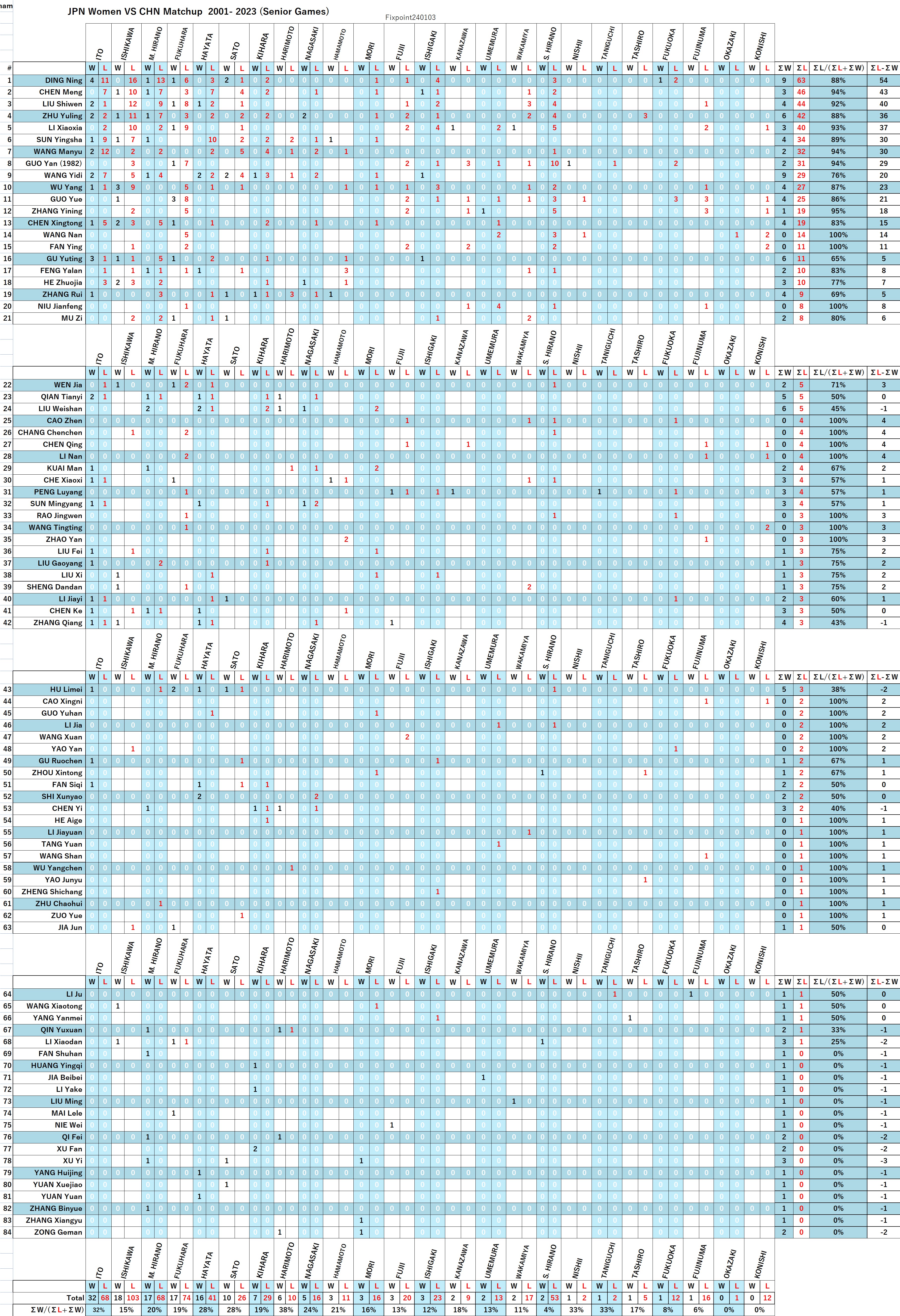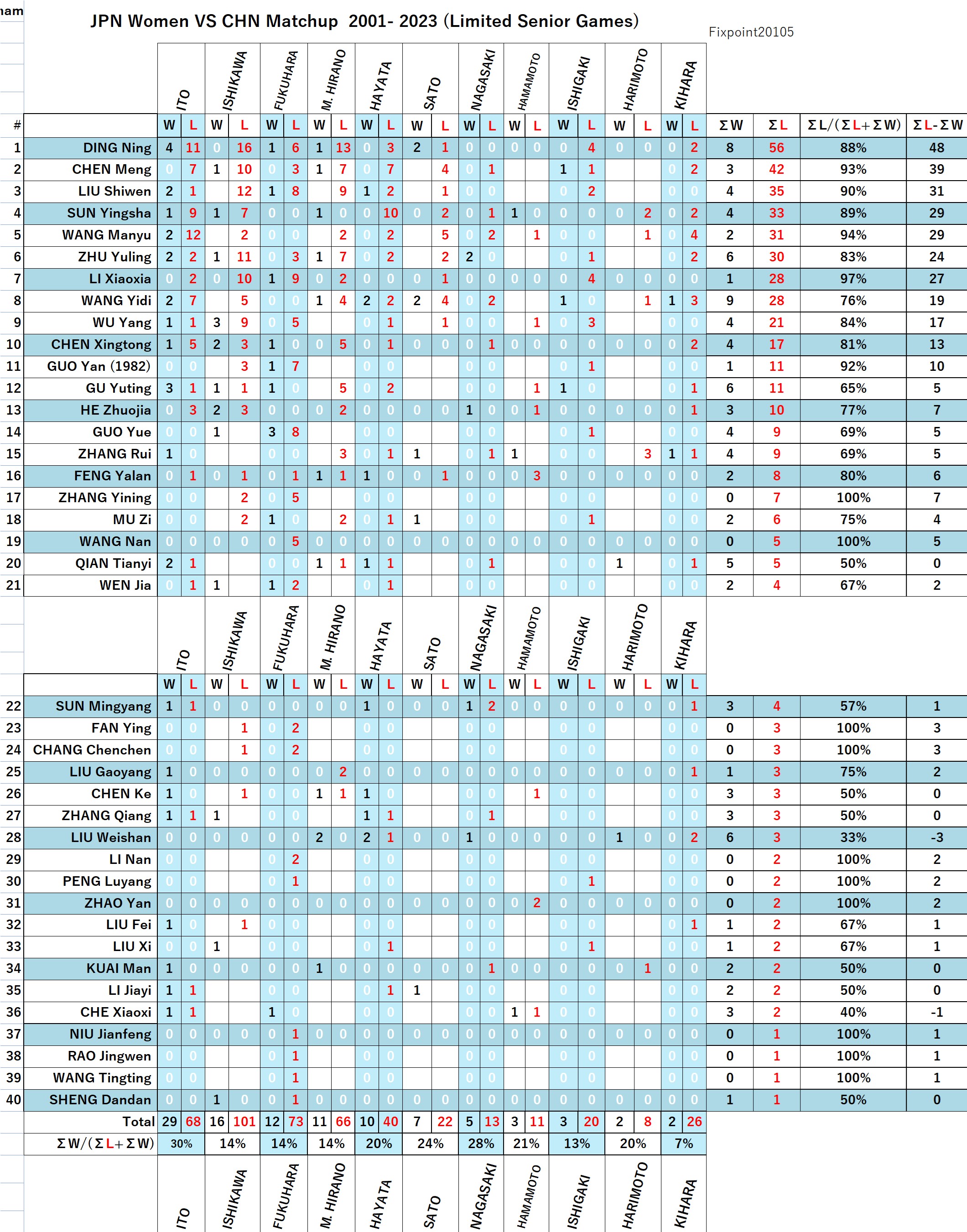Fixpoint

Tables and Graphs below show the match records between Japanese and Chinese female players from 2001 to 2023, based on the ITTF Stats website.
(1) First, I created a table of match records for 24 Japanese national team players at the World Championships team events and their 99 opponents during this period. The number of wins and losses in the match table represents the total results over the entire period from 2001 to 2023. To make the annual win-loss records more accessible, I also created graphs for each year.
(2) Next, I excluded matches from junior and youth competitions and selected 84 Chinese players to examine their match records, ranking the table by the number of wins as the first key and the number of losses as the second key.
(3) Then further, I selected the top 11 Japanese players and top 40 Chinese players based on their records and created a table of matches between these players.
(4)Furthermore, to examine the details of the annual wins and losses, I created detailed tables for 2001-2015 and 2016-2023. These tables include the names of the opponents and match information numbers written at the right end of the table. The numbers indicate which row of the ITTF match information list pertains to each player. However, to make use of this row information effectively, it is necessary to sort the ITTF information in ascending order by year.
1. First, we present a comprehensive match record of Japanese and Chinese female players from 2001 to 2023, including junior and youth matches. The Japanese women's team consisted of 24 members representing Japan in the World Championships team events held during this period, while the Chinese side had 99 opponents. This chart has historical value as a report on the diverse activities of these players. However, it is important to note a significant drawback: the mixing of results from junior matches and those from higher-prestige ITTF matches makes it difficult to discern the actual difference in skill between Japanese and Chinese players.


2. The following chart examines the performance records against 84 opponents in senior matches, excluding junior and youth matches, of the aforementioned 24 Japanese players. A notable limitation of this chart is the mixing of victories from lower-prestige ITTF matches and qualifying rounds with those from higher-prestige matches. High-ranking players in the world rankings can only participate in high-prestige matches, resulting in fewer matches and initially higher-level opponents. In contrast, lower-ranking players have more opportunities to accumulate wins by participating in lower-prestige matches and qualifiers. Please keep this in mind when viewing the chart.


3. The performance records in senior matches were ranked based on the number of wins as the primary key and the number of losses as the secondary key, selecting the top 11 Japanese players and 40 Chinese players to create a matchup chart. The chart thus created excludes results from junior and youth matches, as well as lower-prestige WTT matches and qualifiers. Among the three tables presented on this page, this table is considered the most suitable for comparing the achievements of each player.


4. To scrutinize the details of wins and losses for all matches on an annual basis, detailed charts for the periods 2001-2015 and 2016-2023 were also created. These charts include the names of the opponents and numeric match information on the far right. The numbers indicate the line in the list of ITTF tournament information related to each player. However, to make this line information effective, it is necessary to sort the ITTF information in ascending order by year. The column labeled 'WR' records the world ranking of the Chinese players in April of the respective year (only for the top 10).

